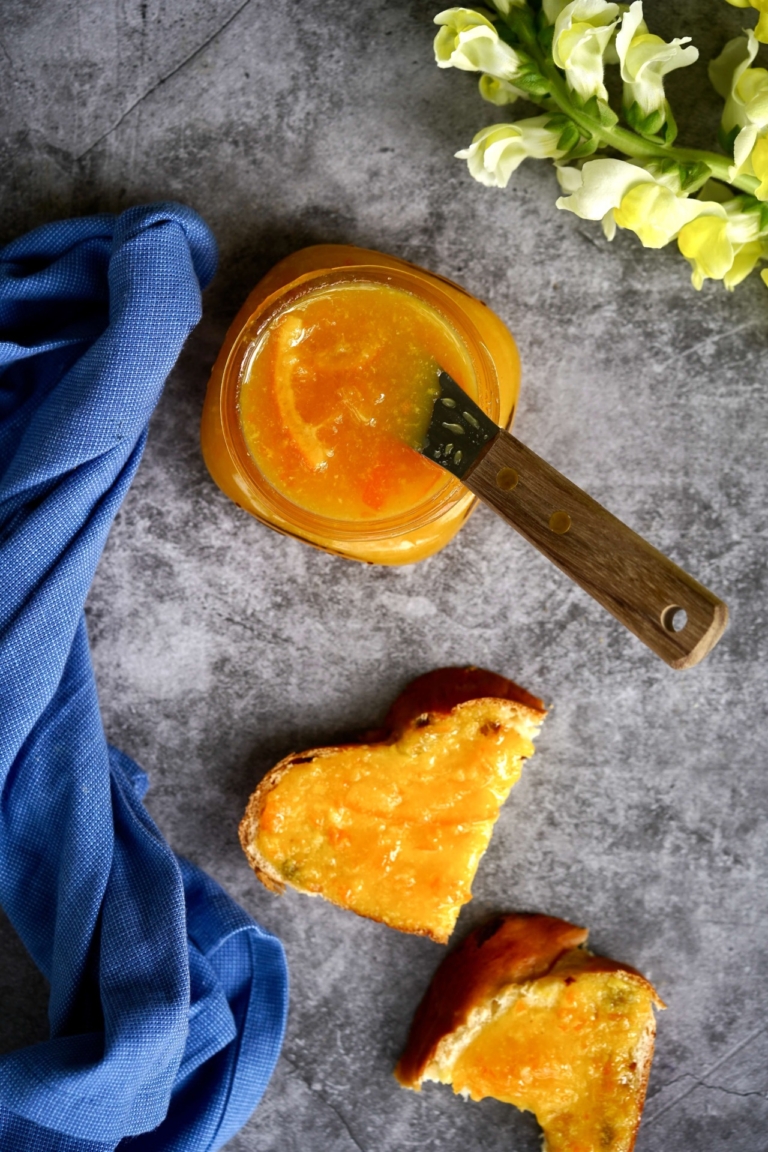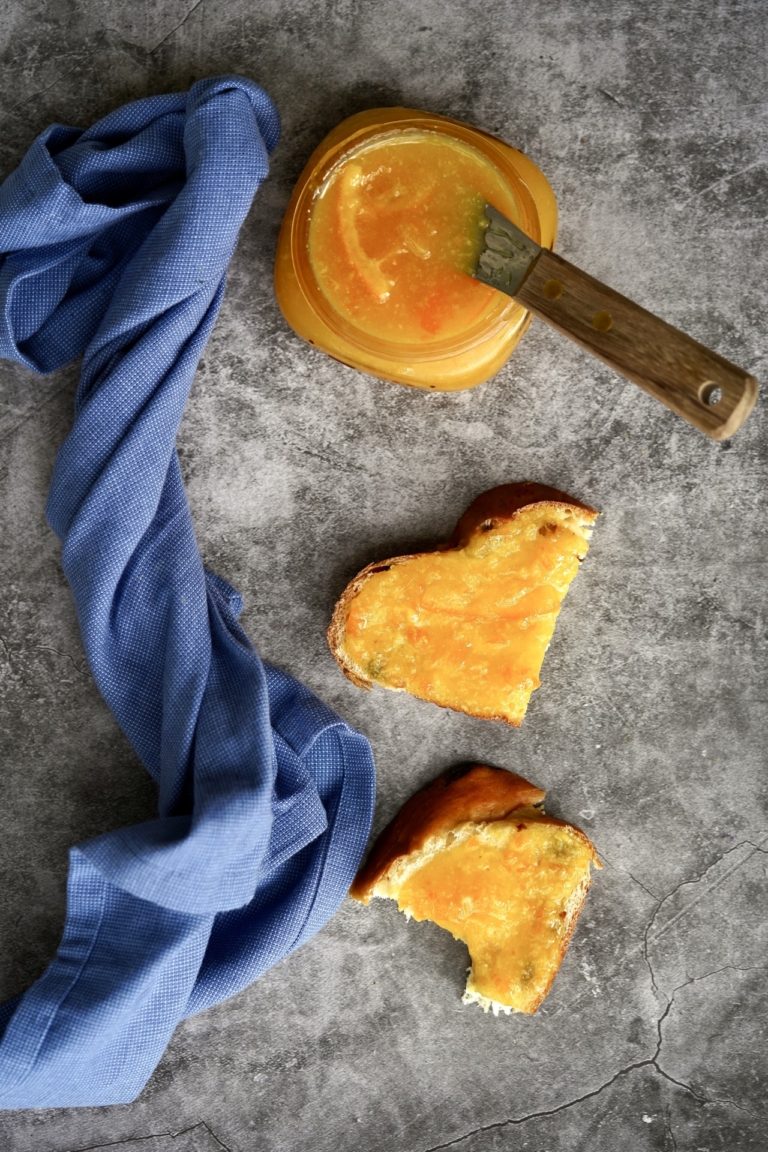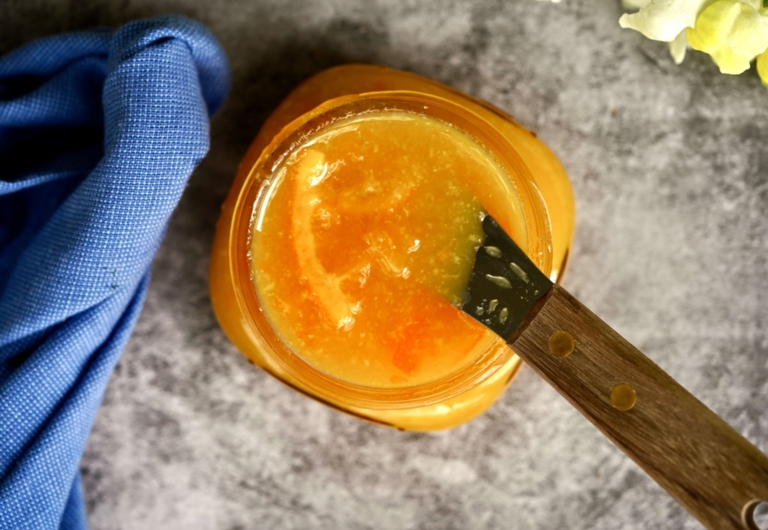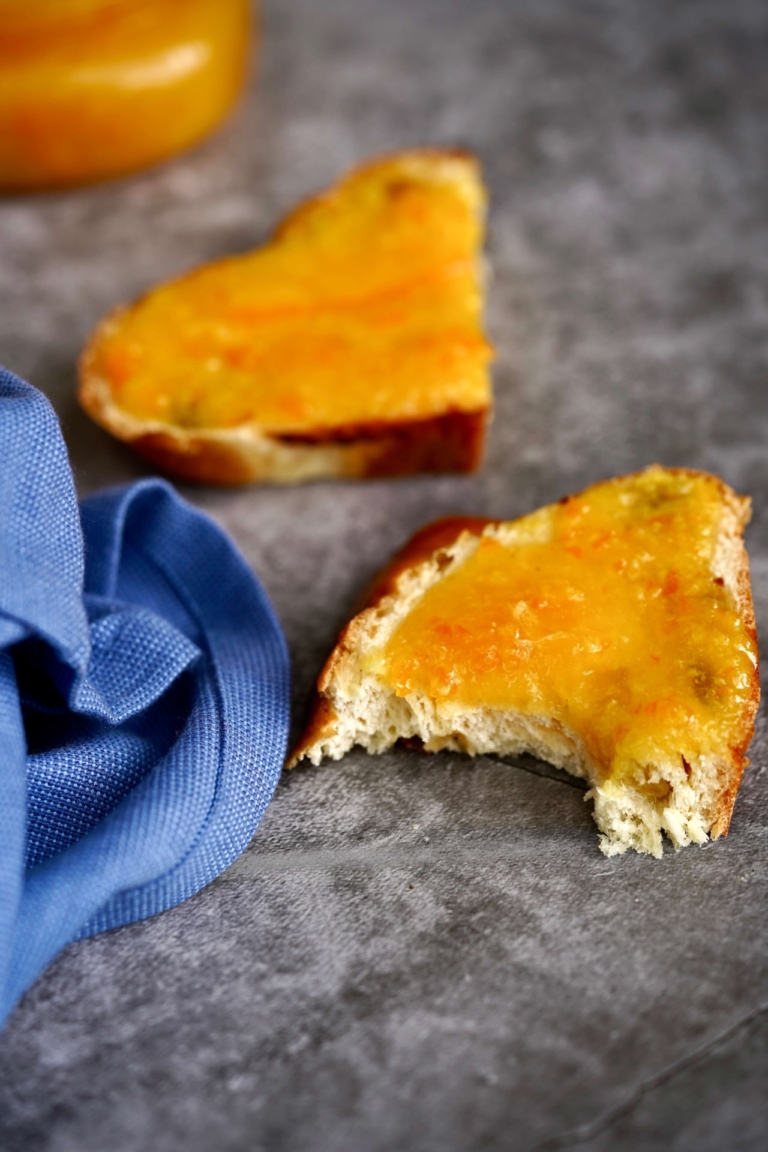Orange Marmalade Spread
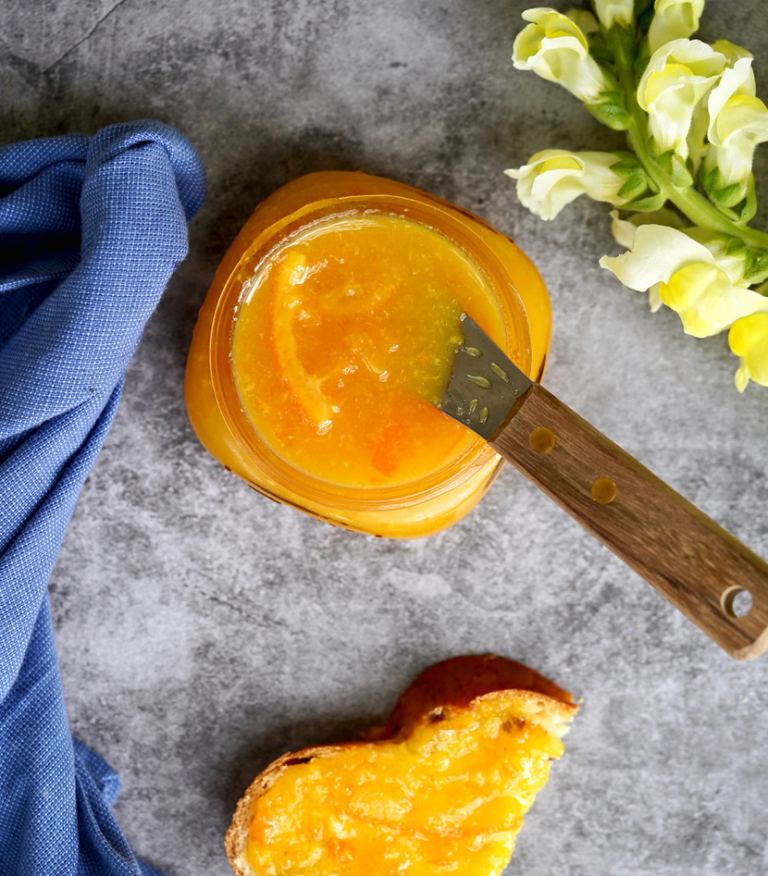
I never liked orange marmalade, until I made it myself. And to be clear, no, orange marmalade is not simply orange jam. Nor does the homemade version look nearly as scary as those little square packets that came with your hotel room service back in the 70s. But what is marmalade exactly and what makes it so unique? And while we’re talking about marmalade, let’s talk about the difference between, jam and jelly, because the truth is, most people have no clue.
Marmalade
Marmalade, is a fruit preserve made from citrus fruits such as; oranges, grapefruit, lemons, and kumquats. The fruit, plus the peel, gets slowly simmered in boiling water until soft, then sugar is added to help thicken it. The result can be lightly textured or gelatinous with larger chunks of rind throughout.
Marmalade is considered the British cousin to jam and jelly. Marmalade combines the sweetness of jam with the bitterness of citrus peel, which gives you a much more complex flavor profile.
Jam
Jam, also called fruit spread, is typically made from chopped or crushed fruit that is cooked with sugar until the fruit is reduced and thickened to a spreadable consistency. Berries and figs are all common jam varieties as well as larger stone fruits like apricots, peaches, and plums. When it comes to jams, think; of looser, chunkier, and less structured than jelly. The consistency of a great jam should be soft enough to spoon and easily spreadable, with small pieces of fruit mixed within.
Jelly
Jelly, is the firmer cousin to jam, but just as sweet. Typically made from fruit juice that isn’t suitable for jam, because it lacks the right amount of natural pectin or it has seeds that are difficult to remove, such as those found in grapes. After the initial cooking, jelly must be strained through a strainer or jelly bag to remove any solids. Powdered, commercially made pectin can be added to help the cooking process along, setting the mixture into a clear, jiggly almost jello-like texture.
Jelly contains the most pectin and the least pulp content of all other fruit spreads. It’s the clearest fruit condiment and should be firm enough to hold its shape when turned out of the container.
Many people shy away from orange marmalade for bitterness reasons. But I’m telling you to reconsider. Orange marmalade is sweet and vibrant, much like orange juice is. Unlike other jams, such as strawberry or raspberry, orange marmalade has a slight zest to it from the citrus component. While it’s never sour the way a fresh lemon is, the pop from the orange peel helps cut through the sweetness, the way citrus tends to do within dessert recipes.
One of the most important factors to preventing bitter marmalade is to cook the orange rind, or the orange peel properly. But because I don’t like my marmalade too bitter, the type of orange you use when making it can matter. Because of this, my preference is to use navel oranges instead of the more traditional Seville oranges. Orange marmalade, paired with my vanilla bean scones, has become one of my favorite breakfasts in recent years. Citrus season is coming to a close, so this is the perfect time to try making your homemade marmalade.
Orange Marmalade Spread
Ingredients:
- 5 medium navel oranges
- 1 teaspoon lemon zest
- 1/2 lemon, juiced
- 3 cups sugar
- 4 cups cold water
Directions:
- Wash the oranges and lemon thoroughly. Cut the oranges into 1/8-inch slices, removing the seeds as you go. Cut the slices into quarters.
- Place the oranges in a medium stockpot. Add the lemon juice, sugar, and water, place over high heat, and bring to a boil. Once boiling, reduce the heat to medium-low to simmer and cook, stirring frequently, for about 60-70 minutes or until the fruit is soft and the liquid is thickening. Remove from the heat and allow to cool slightly.
- Once the marmalade has cooled enough to handle, place 1/2 on a kitchen mixer such as a Cuisinart fitted with a blade attachment. Pulse on/off until the marmalade is blended, the pieces of orange have broken down some and the mixture has thickened. Pour this back into the reserved marmalade and mix well to incorporate.
- Place the marmalade in 3 standard-size glass jam jars and allow to cool completely on the counter. Once cool, seal with a lid and refrigerate. Allow the marmalade to set for at least 12 hours or up to 48.

